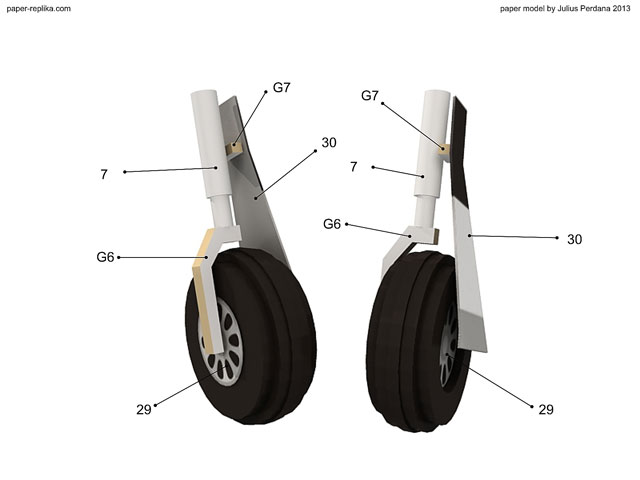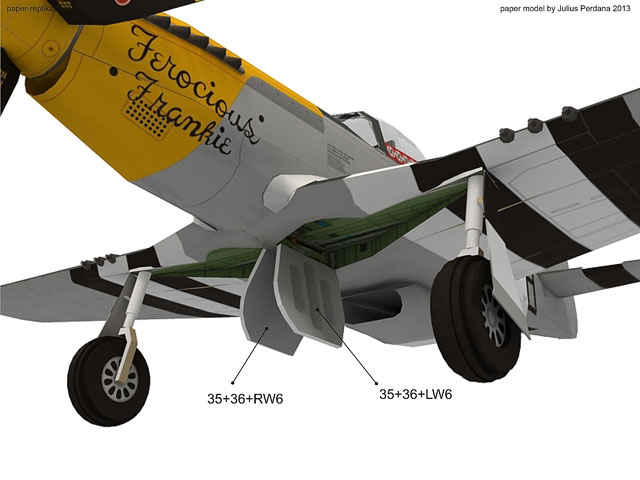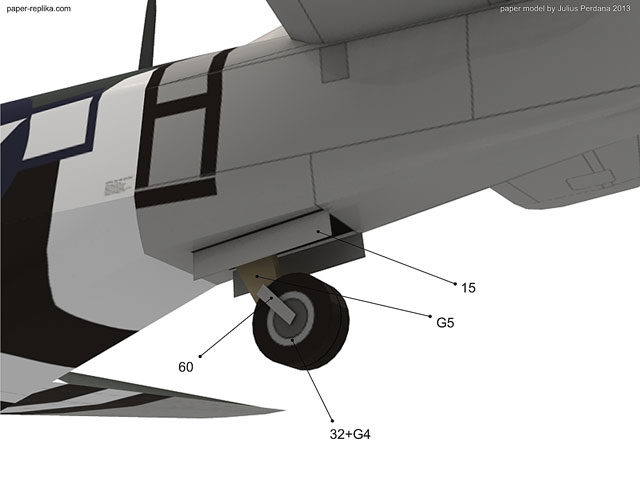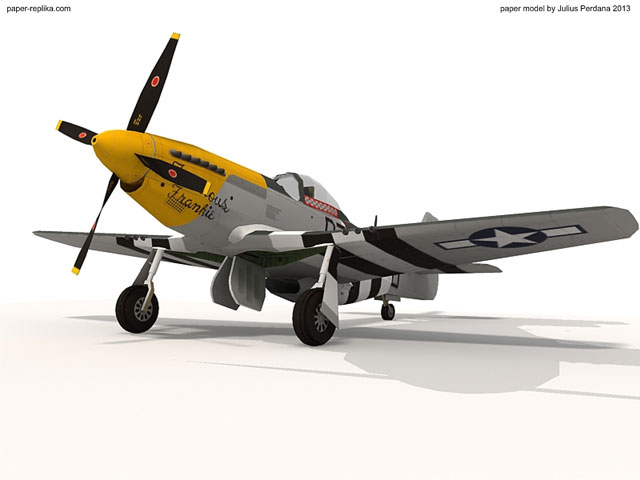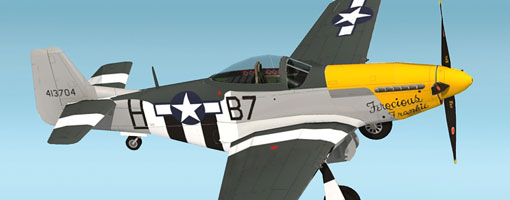
This is the second times I ever designed a paper model template using cardboard as former, the first one is a commercial model and also a plane. This model is different from the rest of plane models that are found at paper-replika.com. There are almost no glue tabs or glue flaps on this template. So how can we assembly the parts if without glue flaps? That's why this template needs another paper type, we need 1.5 mm cardboard for the plane skeleton and 150-160 gsm plain paper fo the aircraft skin. We will use cardboard edge to join one part to another.
I already made a preliminary build on this model and I already made an adjustment and this is the final ready-to-build template. The reason I made this Ferocious Frankie P51D Mustang model is because its color, the color combination is very eye catching to me. Also I have an RC plane with this color scheme, it's so beautiful. There will be another color scheme in the future using this template as a base. The scale is 1:33, the built model will have 37 cm (14.4 inches) wingspan.

Use 1.5 mm thick cardboard for the formers or plane skeleton. Assembly fuselage former parts just like image above. You may want to use CA glue (Cyanoacrylate) to save time. It was quite hard to cut 1.5 mm cardboard with knife, so you may also use big scissors to cut them out. Make sure all formers are aligned in straight line, other wise your model could become twisted. You can use toothpick to become a shaft for the propeller if you'd like, for that you have to cut the round hole on part F2.
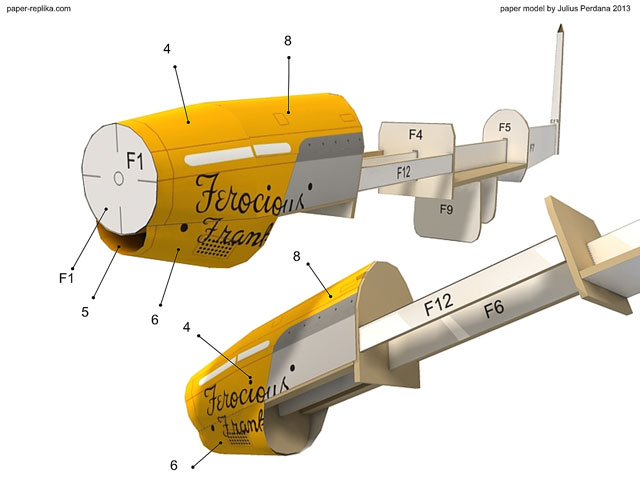
The same as F2, you have to make a hole on part F1 to be able to use the rotate-able propeller. Attach part 8 first on to the skeleton and then add part 4 together with F1. And then assembly part 5 on part 6 and finally put them together below part 4. Make sure they're all aligned straight.
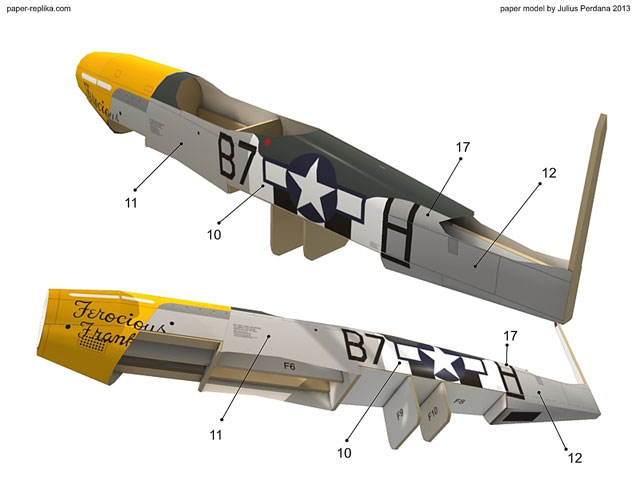
Shape the fuselage by attaching part 11 and 10. Part 12 first and then part 17. Shape all the parts before glueing them on their place.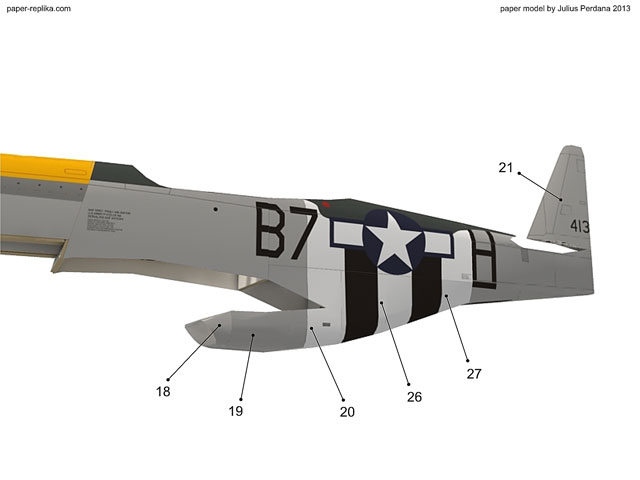
Attach parts : 27,26, 20, 19 and 18 in order. Attach the vertical fin (part 21) in place.
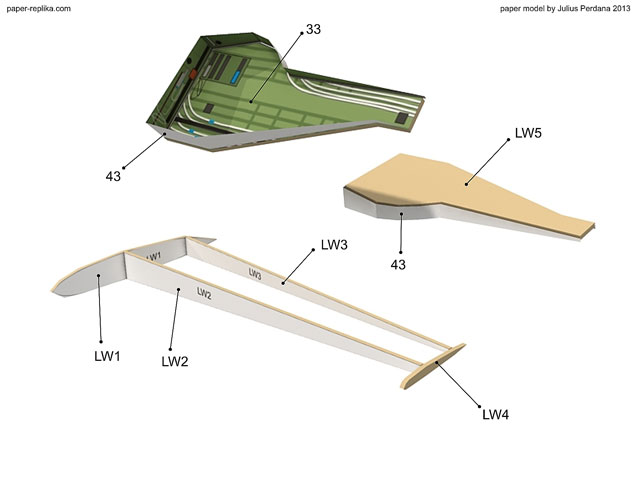
Assembly the left wing former (LW1, LW2, LW3 and LW4) before wrapping it around with main wing skin part. Assembly the landing gear well by glueing part 33 with LW5 and then glue part 43 around the edge.
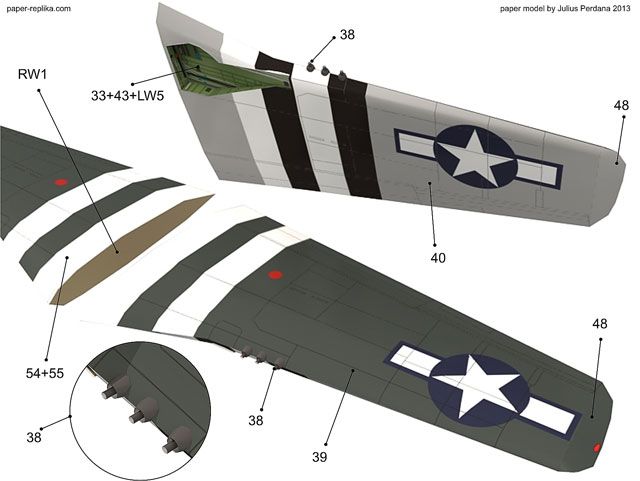
Attach the landing gear well part on part 40 first before close the wing part with part 39. Glue the wing-tip on to its place (part 48). Do the same on the opposite wing. Complete the wing part by attaching 3 .50 cal machine gun muzzles in place (part 38) on each wing.
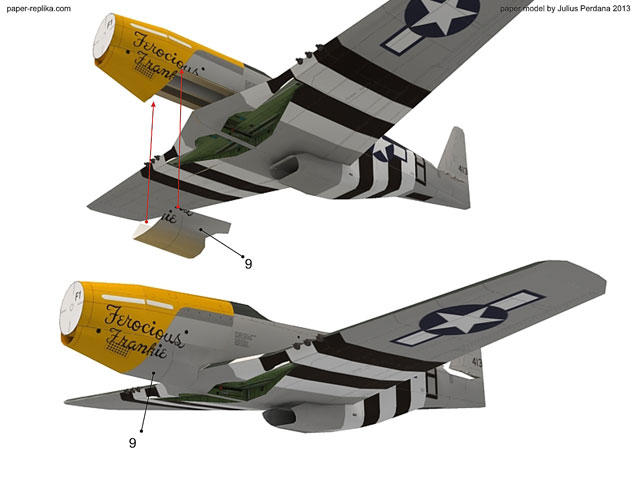
Attach main wing below the fuselage with CA glue then lock it with part 9.
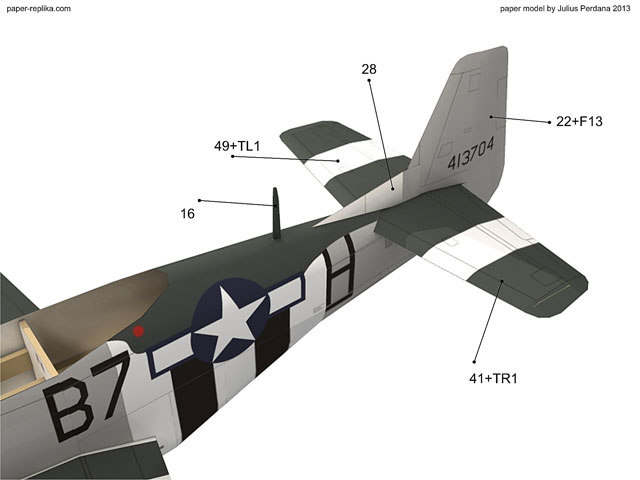
Each rear horizontal fin is composed with 2 parts of formers (TR1/TL1) and 1 parts of skin (part 41/49). Assembly both rear wing and put it on its place and lock it with part 28. Use CA glue. Finally complete the tail section with the rudder (part 22+F13).
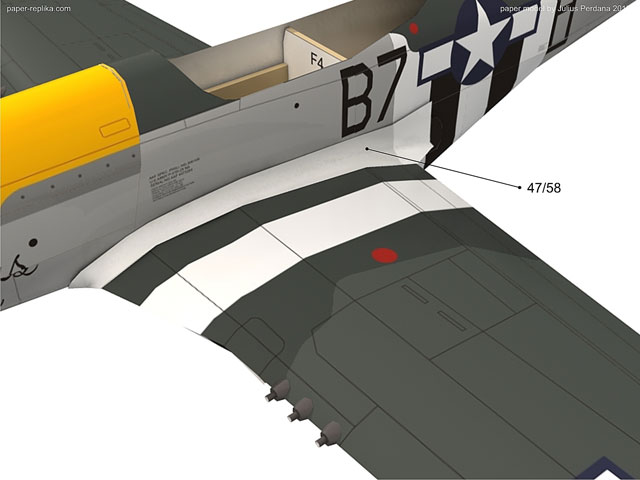
I don't know the name of this part (part 47/58), the function is to join or make the join between wing and fuselage smoother, or seamless. The shape is just like in the real plane. If you confuse how it looked like, you can observe photos of the real plane.
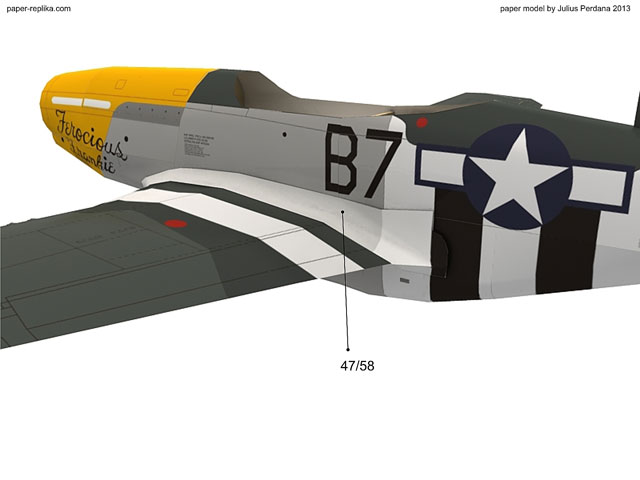
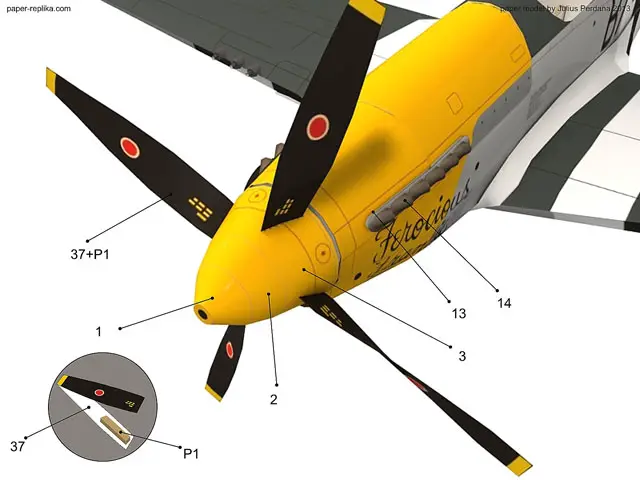
Assembly the spinner with part 1,2,3 and F13. Combine each propeller blades with part P1 (cardboard) and glue the blades on to the spinner with CA glue. Attach the exhaust pipes on both side of the nose (part 13 and 14)

Assembly the cockpit set starts with part 42 and C4, and then attach part 57 (cockpit cavity). Glue part 46 on place and other parts.
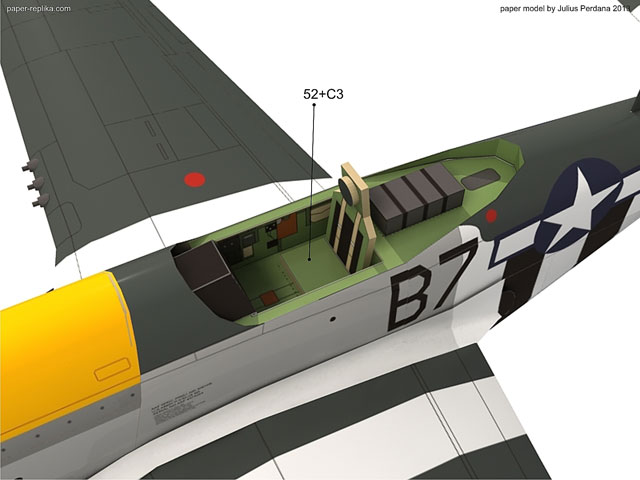
Slip through the cockpit set on to the fuselage.
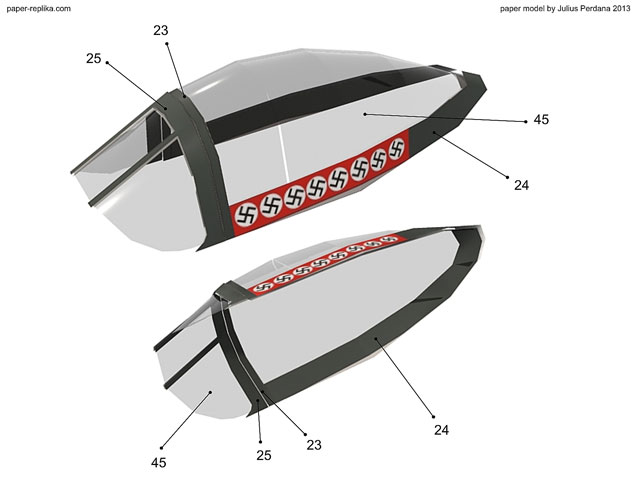
Use celluloid (transparent plastic sheet) for part 45. Glue part 45 to part 24 first to get the bubble shape. And then pun the rest parts. Also put parts on the inside the cockpit glass.

Combine G1, 2 G2s and 2 G3s to become main landing gear base. Paint it with acrtylic paint or you can use black marker.
